TechRadar Verdict
While there will always be issues running Intel X64 code in emulation, the advantages of Snapdragon X are well represented by the Lenovo ThinkPad T14s Gen 6. If you hate running out of battery power, then this is the laptop for you.
Pros
- +
Amazing battery life
- +
Highly portable
- +
Solid keyboard and trackpad
- +
Thunderbolt ports
Cons
- -
Zero upgrade options
- -
A few apps won’t run
Why you can trust TechRadar
Lenovo ThinkPad T14s Gen 6: 30-second review
With a few notable exceptions, the recent history of laptops has been a two-sided affair between Intel and AMD.
Microsoft did dip its toes into ARM-based machines infamously with the Surface RT, a machine that ran a compiled-for-ARM version of Windows 8.1.
The Lenovo ThinkPad T14s Gen 6 isn't remotely similar to that device, which couldn't run Win32 applications. Instead, this is a conventional laptop running Windows 11 Pro 24H2 for ARM.
However, instead of an Intel or AMD processor, the silicon at the heart of this device is a Qualcomm-designed Snapdragon X processor, a chip that evolved from an ARM SoC, like the ones that power most phones and tablets.
Since this isn't a chip based on X86, emulation allows Win32 native applications and code to run on the Qualcomm Snapdragon X1E-78-100 processor. Alongside the Snapdragon X, the SoC has a special Adreno GPU and a Qualcomm Hexagon NPU AI accelerator.
While this might seem exotic and unusual, Lenovo's objective was to deliver the classic ThinkPad experience while taking advantage of the power efficiencies that Snapdragon X offers, and for the most part, it succeeds.
Unlike the Microsoft Surface RT, this is the full Windows experience and a remarkably capable solution with all the bells and whistles that laptop owners might want. The feature set includes a Nano-SIM card slot for mobile data services, Thunderbolt 4/ USB 4.0 ports for high-speed peripherals, and the option for an OLED display, all packaged in a durable ThinkPad chassis.
The only downside of this design is that you can't upgrade the memory or storage from that supplied in the factory.
That issue and a current spat between ARM Holdings and Qualcomm over ARM technology licensing might make the Snapdragon X unavailable in the future.
Lenovo ThinkPad T14s Gen 6: Price and availability
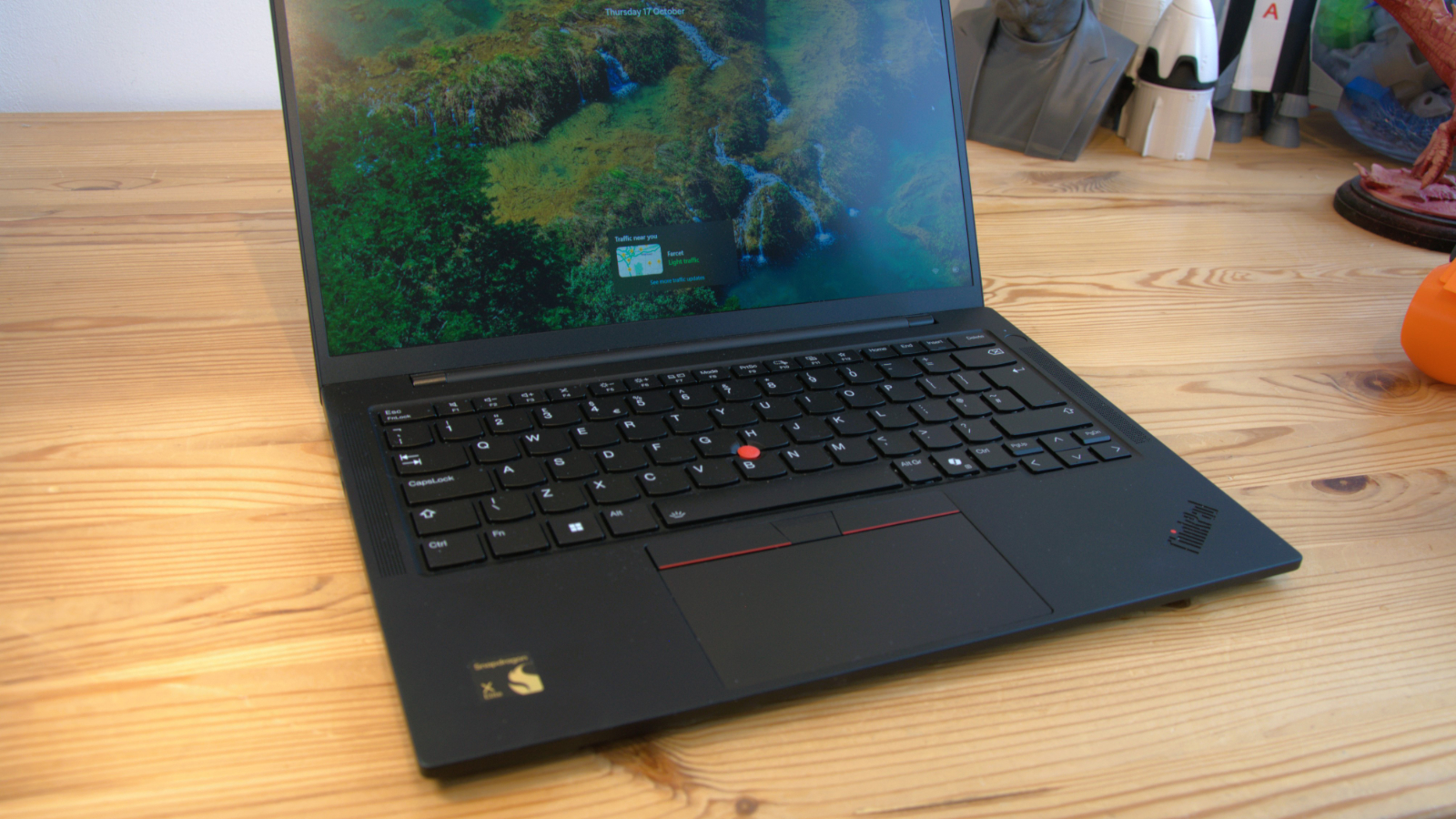
- How much does it cost? From $1180/£1540
- When is it out? Available now
- Where can you get it? Direct from Lenovo
The Lenovo ThinkPad T14s Gen 6 is available directly from Lenovo, starting at £1,538.50 in the UK and a more attractive $1,181.40 in the USA. That price is for a machine running Windows 11 Home with a 1920 x 1200 IPS display, 32GB of LPDDR5X memory and 256GB of storage.
You can downgrade that to the Snapdragon X Plus X1P-42-100 Processor and save $60 in the USA, but the X1E-78-100 is the only Snapdragon X on offer in the UK and Europe.
Upgrading to the review specification with Windows 11 Pro, 1TB of storage increases that cost to $1,511.40.
Taking all the options, including 64GB of RAM, 1TB of storage, a 2.8K OLED screen, and a Quectel RM520N-GL 5G Sub 6 modem, the US cost is over $2000. The UK equivalent of that system is £1946.50.
Comparing this to the Dell 7455, another Snapdragon X design we'll be reviewing shortly, the Lenovo ThinkPad hardware is slightly more expensive. The Dell 7455 starts at £1776.06 in the UK and just $1499 in the USA.
Given the specifications and newness of the technology, the Lenovo ThinkPad T14s Gen 6 is probably more expensive than it should be, but it's not outrageously expensive when compared with some of the Intel and AMD machines it competes.
- Value: 4 / 5
Lenovo ThinkPad T14s Gen 6: Specs
| Item | Spec |
|---|---|
| Hardware: | Lenovo ThinkPad T14s Gen 6 |
| CPU: | Qualcomm Snapdragon X1E-78-100 (12 Cores) |
| GPU: | Qualcomm Adreno GPU |
| NPU: | Qualcomm Hexagon NPU, 45 TOPS |
| RAM: | 32GB LPDDR5-8448 (Soldered, no upgrade) |
| Storage: | 1TB M.2 NVMe SSD |
| Screen: | 14-inch WUXGA (1920x1200) IPS AG (400nit, 45% NTSC, 60Hz) |
| Ports: | 1x USB 3.2 Gen 1 USB-A, 1x USB 3.2 Gen 1 USB-A ?Always On?,2x USB-C Thunderbolt 4/USB 4.0, 1x HDMI 2.1, 1x Audio Combo Jack |
| Camera: | FHD 1080p + IR discrete Always On computer vision |
| Networking: | Qualcomm Wi-Fi 7 NCM825A, 802.11be 2x2 Wi-Fi. Bluetooth 5.3 |
| Dimensions: | 313.6 x 219.4 x 16.9 mm |
| Weight: | 1.24kg |
| OS: | Windows 11 Pro for ARM (pre-installed) |
| Battery: | 58Wh |
| Power supply: | 65W (20V 3.25A) |
Lenovo ThinkPad T14s Gen 6: Design
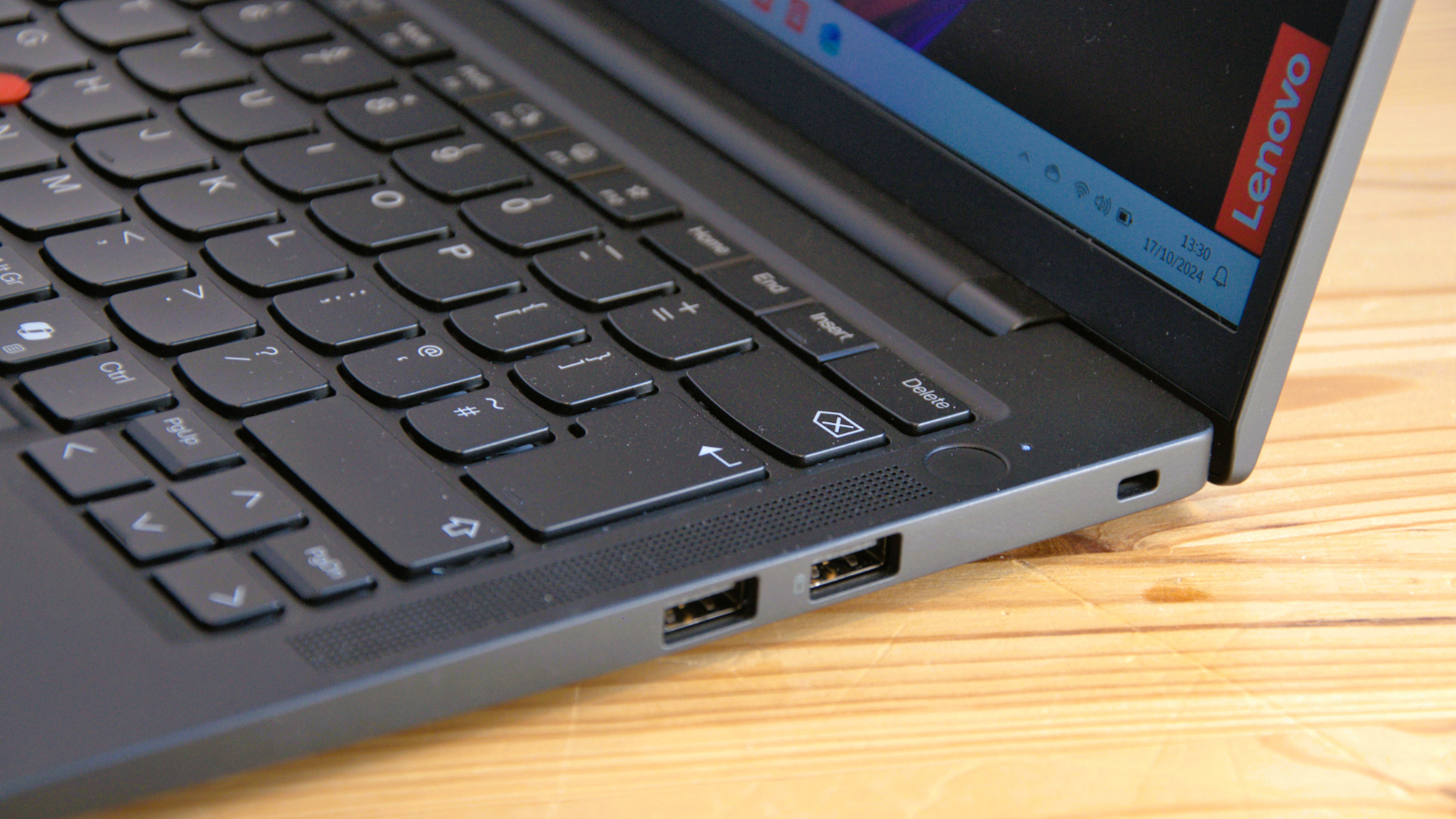
- ThinkPad quality
- Highly portable
- Thunderbolt
- Zero upgrades
From the point where IBM launched the ThinkPad brand, it stood for a certain level of construction quality, and the Lenovo ThinkPad T14s Gen 6 doesn't undermine that legacy.
The black finish and red trim feel confident and robust in a way that other laptops struggle to match.
At 1.24kg (2.72 lbs), this design isn't the lightest 14-inch laptop we've ever tested, but it's light enough to be easily carried through the day and, critically, almost exactly the same weight as the Apple MacBook Air.
While our review hardware had a 1080p non-touch screen, getting a model with touch and a higher resolution OLED panel (non-touch) is possible. The IPS option we got wasn't fantastically bright, but it was sharp and didn't negatively impact battery life.
As we've come to expect with Lenovo, the keyboard and touchpad are both of excellent quality and using this device to input large documents isn't impractical.
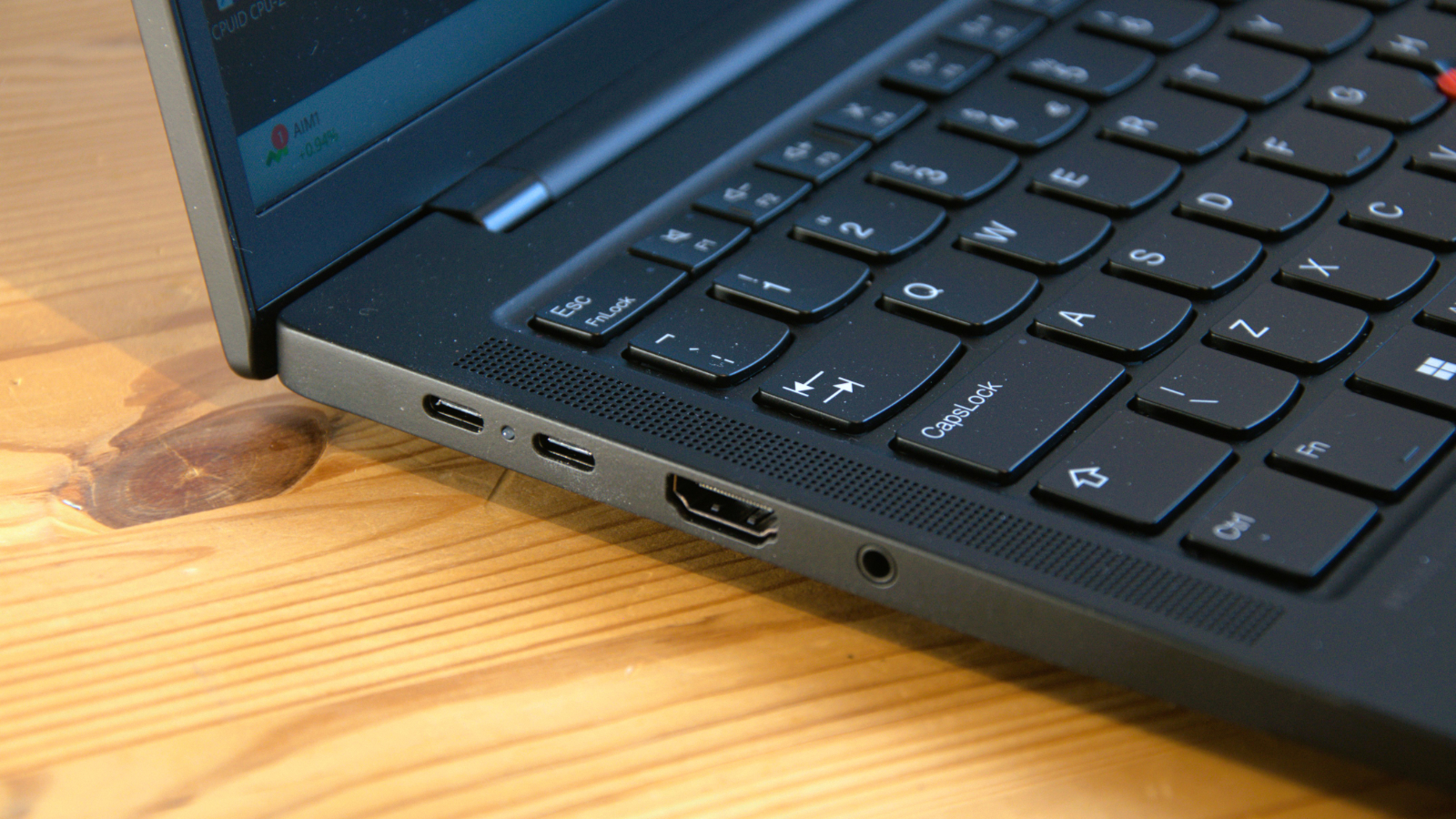
What we hadn't assumed and were surprised to see was the excellent selection of ports the ThinkPad T14s Gen 6 offers. Alongside USB, the inclusion of Thunderbolt 4/USB 4.0 makes this machine perfect for using a Thunderbolt dock, enabling it to connect to peripherals with a single cable and simultaneously charge the battery.
Those paying over $1500 for a laptop should expect Thunderbolt, as it enables many other useful technologies with its inclusion.
The fine irony of this functionality is that only one company makes Thunderbolt silicon, Intel. Therefore, while the headline story of the technology in this machine is Snapdragon X, it does have some Intel-branded chips alongside that. These include the Thunderbolt and Wi-Fi technology.
The downside of this platform is that the Lenovo engineers who designed it were instructed not to make it upgrade-friendly. As a result, the memory is surface-mounted and can't be replaced, and the NVMe is also not replaceable.
If you want a specific amount of memory or storage, it needs to be determined at the point of sale since it isn't possible to change it once you have the machine.
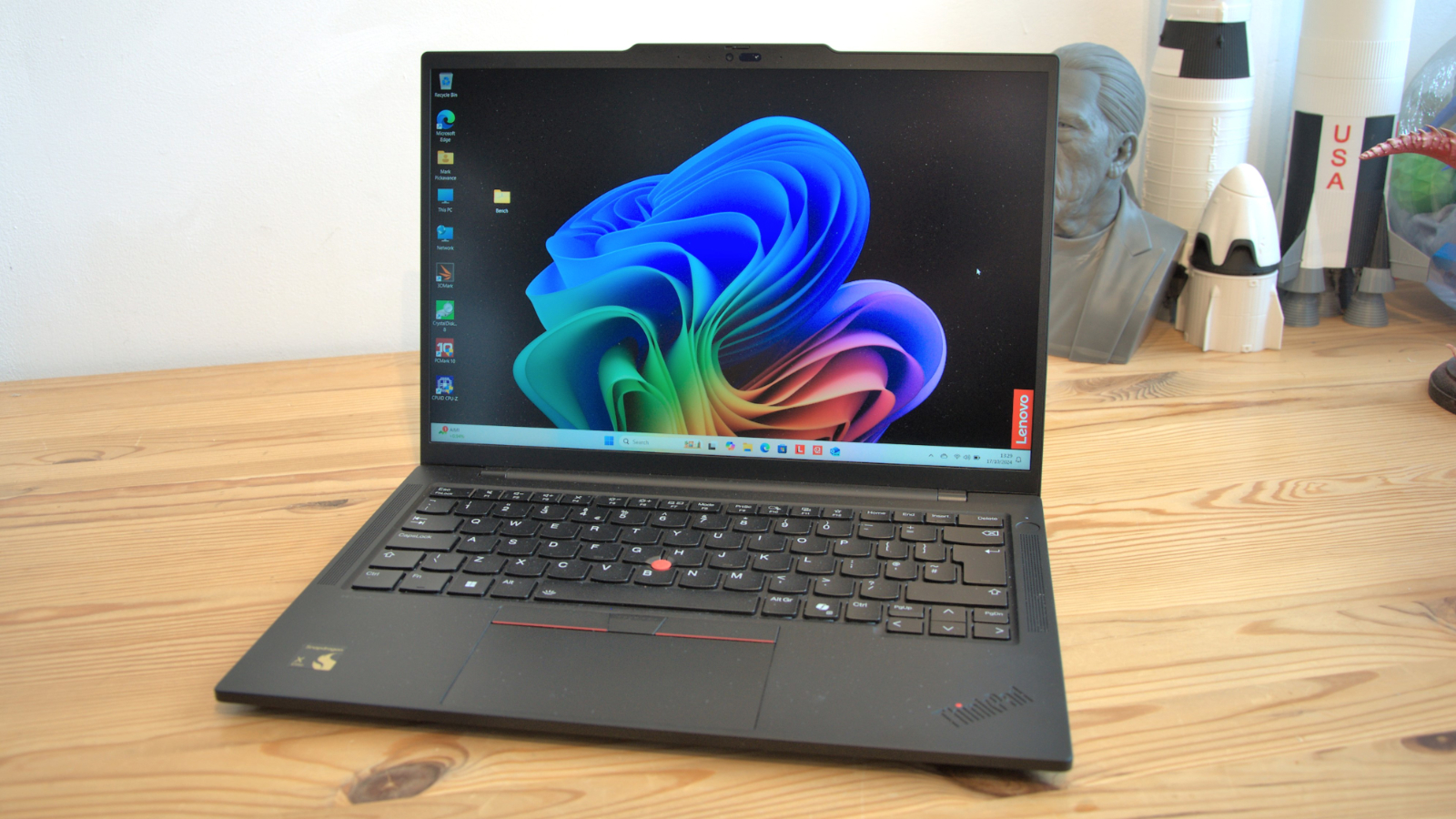
- Design: 4 / 5
Lenovo ThinkPad T14s Gen 6: Hardware
- Qualcomm Snapdragon X1E-78-100
- Adreno X1-85 iGPU
- Hexagon NPU
Considering where ARM originated from and how it dominates the mobile space, it is somewhat surprising that the Snapdragon X Elite has taken so long to crash the PC party.
Intel and AMD should both be concerned. This highly efficient processor design sports twelve Oryon CPU cores arranged in three core clusters running at up to 3.4 GHz. It can compete with the best the legacy chip makers can offer, even in its X1E-78-100 form. What is most concerning for Intel and AMD is that the Snapdragon X Elite X1E 78/100 model is one of the least potent options in this series, and even more powerful chips are waiting in the wings.
Integrated into the SoC is the Adreno X1-85 iGPU, rated at 3.8TFLOPS and a dedicated AI neural processor, the Hexagon NPU, rated at 45TOPS. The NPU is more powerful than the one Intel has included in its second-generation Ultra Core processors, and the Adreno X1-85 is better than the Intel Iris Xe (96 EUs).
What helps the supporting parts of the SoC deliver the best performance is that the Snapdragon X Elite can access faster LPDDR5x-8448 memory technology. As the CPU, GPU, and NPU depend on the memory speed for their calculations, the new DDR5 memory controller in the Snapdragon X Elite is critical to how well this system performs.
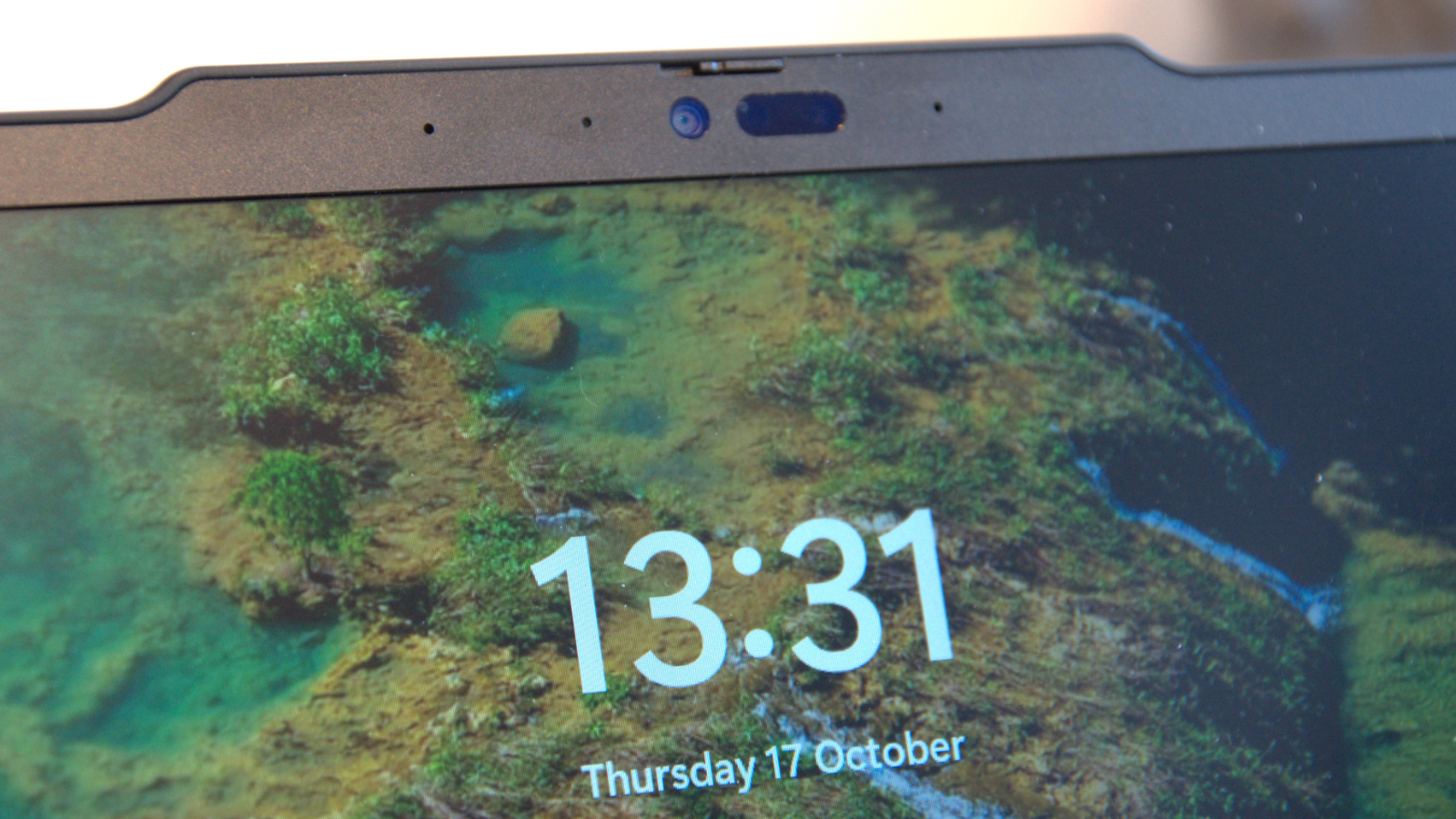
Intel has been heavily criticised in some quarters for its NPU because, for AI processing, even the new Ultra Core chips aren't sufficiently powerful for localised models. Depending on what documentation you read, the Hexagon NPU on this laptop is either 40 or 45 TOPS, making it either equivalent or slightly better than the Intel alternative.
Interestingly, some of the features of Microsoft Co-pilot that are NPU handled are currently disabled for Intel NPUs, but they might be active for the Hexagon silicon here.
AI localised processing is in its infancy, but choosing this architecture doesn't exclude you from some of the AI functionality starting to invade the desktop. However, its usefulness to a typical user is debatable.
The Lenovo ThinkPad T14s Gen 6 hardware is as good, if not better, than an equivalent Intel or AMD-powered machine, making this choice not about missing features but more of a magical mystery tour that using new technologies can be.
- Hardware: 4 / 5
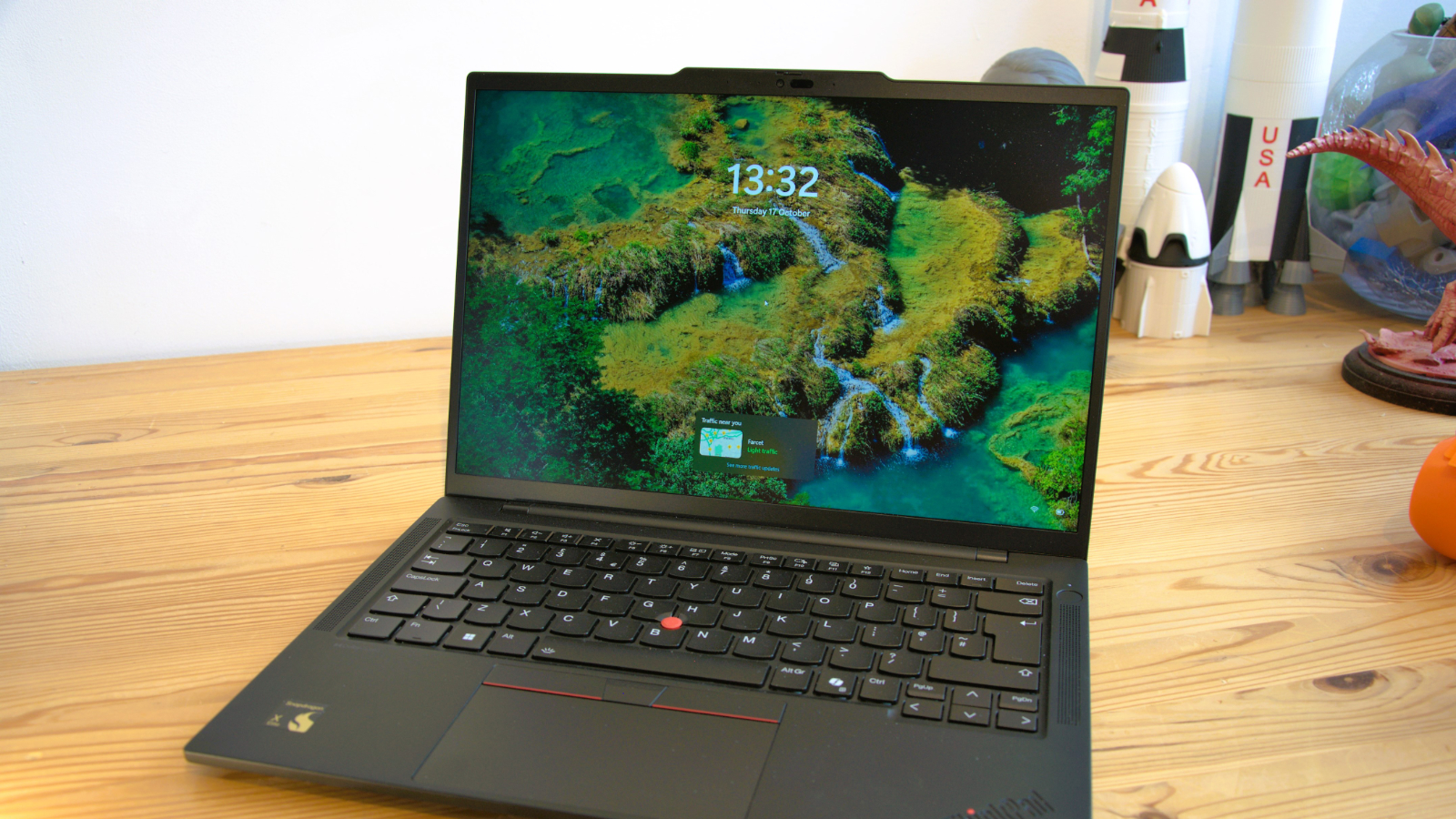
Lenovo ThinkPad T14s Gen 6: Performance
| Laptops | Header Cell - Column 1 | Lenovo ThinkPad T14s Gen 6 | Asus Expertbook |
|---|---|---|---|
| CPU | Row 0 - Cell 1 | Snapdragon X Elite X1E-78-100 | Intel Core Ultra 5 226V(Engineering Sample) |
| Cores/Threads | Row 1 - Cell 1 | 12C 12T | 8C/8T |
| TPD | Row 2 - Cell 1 | Variable | 17W |
| RAM | Row 3 - Cell 1 | 32GB DDR5 (1x 32GB) | 16GB DDR5 (8x 2GB) |
| SSD | Row 4 - Cell 1 | 1TB Samsung MZVL81T0HDLB | 512 GB Samsung MZVL8512HELU |
| Graphics | Row 5 - Cell 1 | Adreno X1-85 GPU | Intel Arc GPU |
| NPU | Row 6 - Cell 1 | Hexagon NPU (45 TOPS) | Intel NPU (40 TOPS) |
| 3DMark | WildLife | 17,339 | 13,247 |
| Row 8 - Cell 0 | FireStrike | 5444 | 6273 |
| Row 9 - Cell 0 | TimeSpy | 1819 | 3047 |
| Row 10 - Cell 0 | Steel Nomad.L | 2098 | 1908 |
| CineBench23 | Single | 1096 | 1760 |
| Row 12 - Cell 0 | Multi | 7440 | 8390 |
| Row 13 - Cell 0 | Ratio | 7 | 4.77 |
| GeekBench 5 | Single | 1637 | N/A |
| Row 15 - Cell 0 | Multi | 13261 | N/A |
| Row 16 - Cell 0 | OpenCL | N/A | N/A |
| Row 17 - Cell 0 | Vulkan | N/A | N/A |
| CrystalDIsk | Read MB/s | 6184 | 5035 |
| Row 19 - Cell 0 | Write MB/s | 4803 | 2804 |
| PCMark 10 | Office | N/A | 6137 |
| Row 21 - Cell 0 | Battery | 21h 8m | 18h 18m |
| Battery | Whr | 58 | 50 |
| WEI | Row 23 - Cell 1 | N/A | 8.3 |
We recently tested the Asus Expertbook, which uses the Intel Core Ultra 5 226V processor, and that seemed a suitable comparison since it also offers a power-efficient platform.
These benchmarks reveal that the Snapdragon X Elite can't compete with the Intel chip in linear tasks, but it's generally much better at multi-threaded problems.
It isn't easy to get definitive answers in some areas because both machines have tests they won't run. Why the ExpertBook won't run GeekBench 5 is a mystery, but the issues with the ThinkPad T14s Gen 6 not running some tests are better understood.
The Snapdragon X Elite system is ideally looking for executables that are compiled for ARM, but it will run X86 code through emulations, taking roughly a 20% performance hit to do that.
Microsoft has an ARM version of Office, but the PCMark 10 test won't use it since it isn't the X86 version it expects.
Equally, the Adreno X1-85 GPU is DirectX 12-enabled but not DirectX 12 Ultimate-enabled, making it unable to run some of the graphics tests. That statement makes it sound like this isn't a good GPU, but it does support VRS and ray tracing, and its performance in the 3Dmark tests was decent.
However, the most exciting result is the battery life, where the 58Wh battery managed to run the PCMark battery test for a whopping 21 hours and 8 minutes. That's approaching three working days without a recharge, impressively.
Admittedly, the ExpertBook manages 18 hours or more on slightly less battery, but the ThinkPad T14s Gen 6 makes most 14-inch laptops look silly with the running time that they offer.
- Performance: 4 / 5
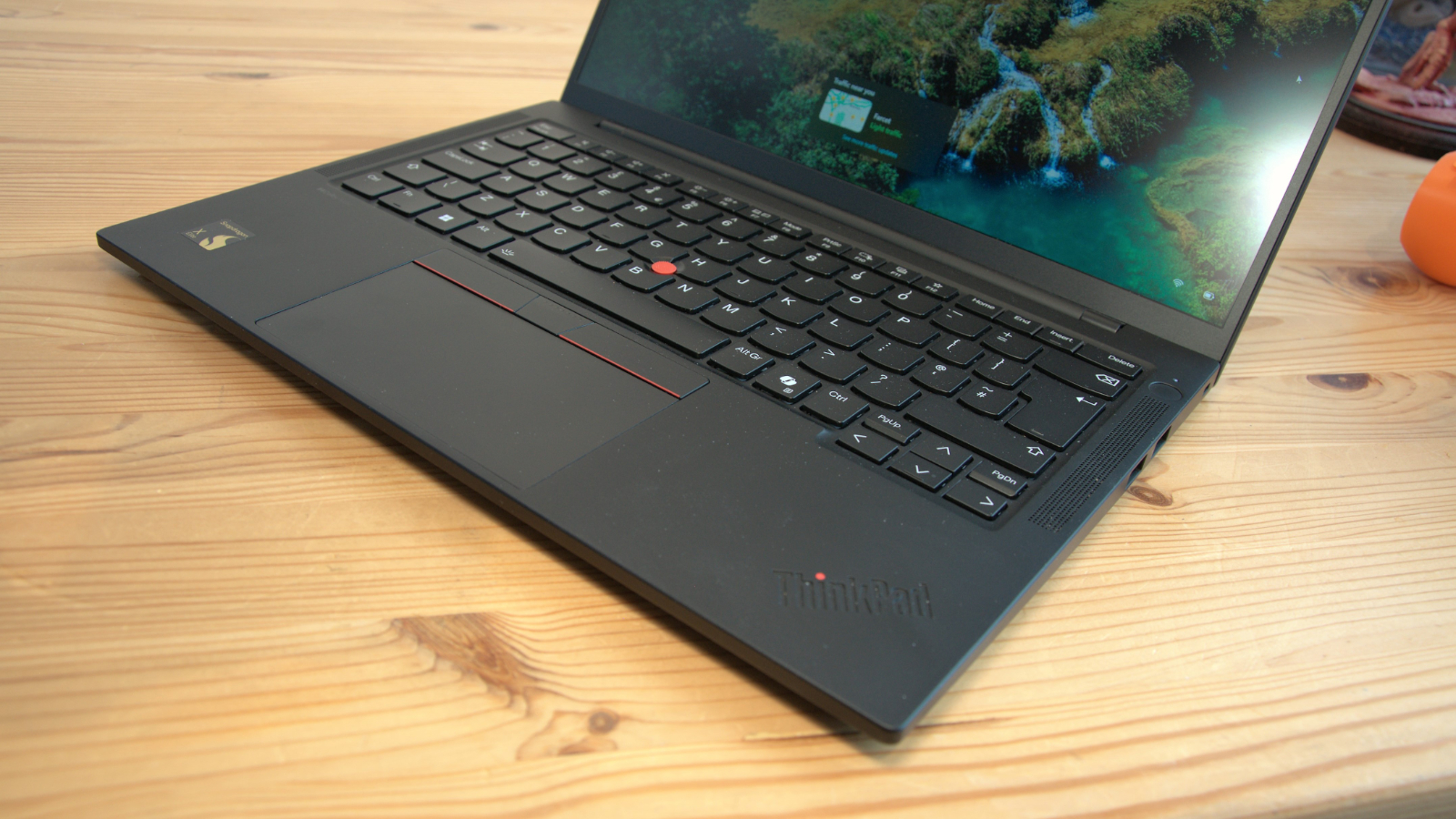
Lenovo ThinkPad T14s Gen 6: Verdict
There was a time when AMD suffered from techno-snobbery, and they weren't Intel and, therefore, not entirely compatible. That's mostly thinking of the past, but will it reappear to rain on Qualcomm's parade and the Snapdragon X Elite?
There will be legacy applications that won't run under emulation and don't have ARM-compiled versions, so it might be worth performing some due diligence on the tools you use before buying a machine like this.
That said, most things run flawlessly, and the power efficiency of this platform is daunting for Intel and AMD. As more powerful Snapdragon X Elite series chips come to market, support for ARM native code will increase, and many issues will simply cease.
In short, the platform is excellent, and the ThinkPad T14s Gen 6 uses it effectively. It is offered at a price that businesses can afford.
The only cloud on this distinctly blue sky is the one that ARM Holdings created when it decided to end ARM licensing for Qualcomm, calling into question the future of all its SoC products.
We asked Lenovo to comment on this situation, and they made the following statement:
"We're aware of the licensing dispute between Qualcomm and ARM and are not aware of any immediate impact to Lenovo devices. For any other questions please refer to the parties involved for comment.
As both a licensee and licensor of intellectual property, Lenovo believes that fair, reasonable, and transparent license terms need to be set across the technology industry for accessible and affordable innovation to thrive."
We hope this dispute gets resolved soon. The ThinkPad T14s Gen 6 demonstrates well that the laptop market needs the momentum injection that Snapdragon X Elite could bring to what had become a slightly stale environment.
Should you buy a Lenovo ThinkPad T14s Gen 6?
| Value | Excellent build quality | 4 / 5 |
| Design | Nothing radical here, but all the ThinkPad details | 4 5 |
| Hardware | CPU, GPU, NPU and Thunderbolt hardware. | 4/ 5 |
| Performance | Fast, efficient and with incredible battery life | 4 / 5 |
| Overall | Classy machine with exceptional run time on a single charge | 4 / 5 |
Buy it if...
You need a durable workhorse
ThinkPads have always been well-built; this one is ready to handle the Office like a champ. But the durability doesn't make this machine heavy or awkward.
You need good battery life
The power efficiency of this design is exceptional. It doesn't matter how long your working day is, the Lenovo ThinkPad T14s Gen 6 should cope if it's been recharged.
Don't Buy it if...
You use legacy apps
While legacy apps should work through emulation, there is no guarantee without an Intel or AMD processor that natively runs X86 code. While the Snapdragon X Elite does a fine job of emulating an Intel processor, some old applications might struggle to run on it.
You like upgrading
The lack of any memory or storage upgrades is disappointing. If you like machines you can enhance, then the Lenovo ThinkPad T14s Gen 6 isn't for you.
Mark is an expert on 3D printers, drones and phones. He also covers storage, including SSDs, NAS drives and portable hard drives. He started writing in 1986 and has contributed to MicroMart, PC Format, 3D World, among others.

